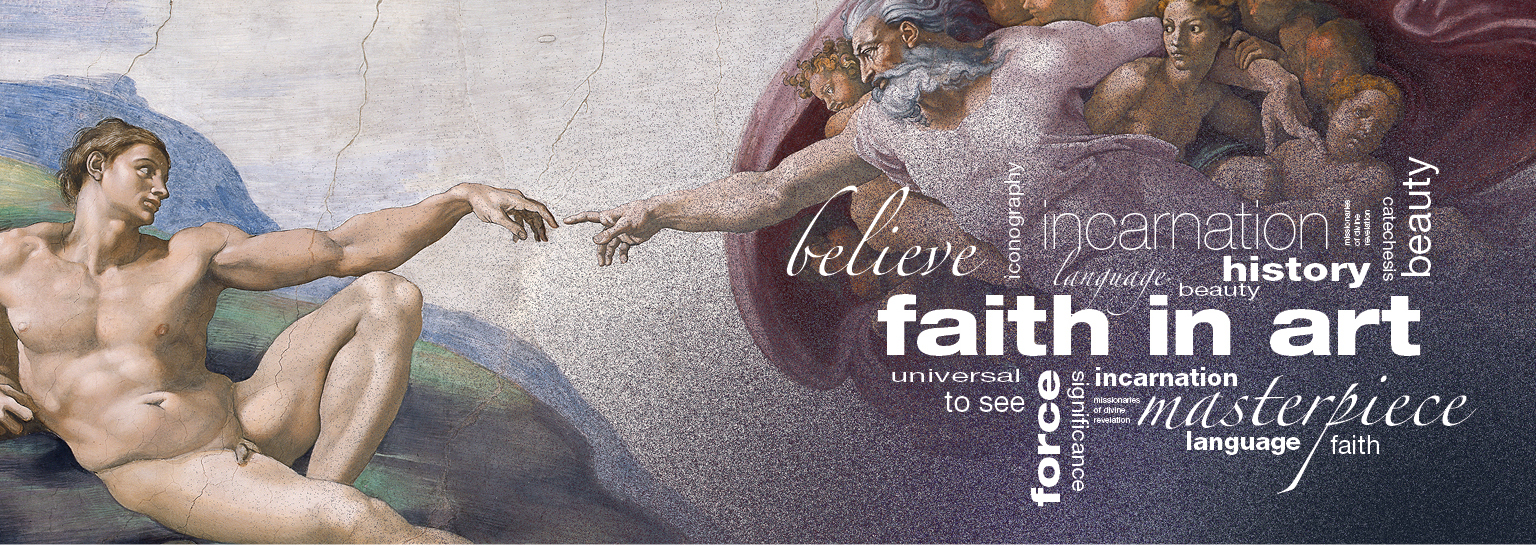Federico Barocci (circa 1535-1612 ) was one of the most highly regarded mannerist painters of the 16th Century. His works were characterised by an exceptional use of colour and the composition of his works are both beautiful and intellectually interesting. Barocci, a third order Franciscan, was a man of faith and it influenced his art. Indeed almost all of his compositions were of a religious subject. His religious masterpieces are filled with piety and almost seek to be a “Bibbia Pauperum” a Bible in images. Barocci believed that the function of art was to realise the Holy Scriptures in beautiful artistic images, making the transcendent presence of God appear before the viewer of the masterpiece.
Annunciation, commissioned by Laura Pontani Coli for the Chapel of the Annunciation in the Basilica of St Mary of the Angels in Assisi in 1596, is one of Barocci’s most renowned and beautiful paintings that in simple terms visualises the Biblical narrative.
The scene is set in the Virgin Mary’s home. The deep perspective of the piece draws the viewer into the room. In the background you can see the view from the window which shows the twin towers of the Ducal Palace of Urbino. It is the scene from Barocci’s own studio window which gives the painting an earthly or familiar feel! In the left hand foreground of the piece we can see the figure of a cat asleep in Mary’s sewing basket. This is another ‘mundane’ detail that gives the feeling of a real living room. Barocci uses these familiar images in order to make the scene accessible to his viewers – or to transport the viewer from their everyday lives into the Gospel account.
It is as if we enter Mary’s room. Mary is alone in the act of contemplation of the scriptures and, upon the Angel’s arrival, she turns from her reading and places the Bible onto the table behind her. Barocci uses these details as a characterisation of Mary’s internal state as she is the Woman who pondered the things of God in her heart (cf Lk2:19). From an iconographical perspective the book, the Bible, signifies the fact that Mary is the woman of prophecy of which Isaiah spoke ‘the virgin will conceive an bear a son and will call Him Immanuel’ (Is 7:14).
To show that Our Lady was “blessed amongst all women and full of Grace” (cf Lk2) Barocci used a noble woman, renowned for her great beauty, as a model for Our Lady. Mary has an enchanting serene look upon her face and her red and royal blue clothing, that are symbols of her Divine Majesty, bring great light into the pictorial composition against the darkened background. This is a symbol of the coming of the Light of the World through the Incarnation.
The Angel Gabriel is in the act of greeting Mary with what St Thomas calls the ‘Angelic greeting’…..’Hail full of grace’ (Lk 1:28) In his had we see a lilly which is the sign of Mary’s perpetual virginity. Barocci depicts the Angel Gabriel kneeling before Mary to show how the Angel gives honour to Mary. Gabriel kneels to acknowledge Mary’s unique status before God, that of being Immaculate – Full of Grace or Full of God!
In the upper portion of the painting we see the heavenly sphere revealed. God the Father is in heaven looking down in an expectant wait for Mary’s response to His Divine Plan. The salvation of mankind rests on this freely given ‘yes’. Barocci creates all the tension of the moment as the angels to the right and left seem to encourage Mary by their prayers. Mary then responds: “…fiat mihi secundum verbum tuum” (Lk 1:38) – “May it be done to me according to your word,” and she conceives by the power of the Holy Spirit.
The Annunciation is a very beautiful work of art that portrays the biblical scene. Barocci’s genius resides in his ability not so much to create Biblical scenes drawn from everyday life but rather to depict scenes that depict the very essence of life itself. When contemplating this piece it is as if Mary is showing us that the fullness of life, that natural radiance that surrounds her, resides in being the “handmaid of the Lord” (Lk 1:38) and that by imitating her that joy can also be ours as the Almighty One can do great things for us too. (cfr Lk1:49)

